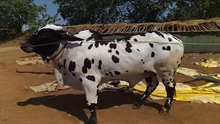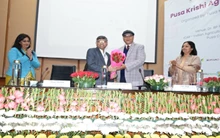
The World Health Organisation (WHO) on Friday praised the measures taken by the authorities to contain the deadly coronavirus in the largest slum of Asia, Dharavi, saying that testing and tracing is the key to break the chain of transmission of the highly contagious disease.
Talking about the successes of some countries in controlling the spread of COVID-19, WHO Chief Tedros Adhanom Ghebreyesus at a virtual press conference in Geneva said, "Some of these examples are Italy, Spain and South Korea, and even in Dharavi - a densely packed area in the megacity of Mumbai - a strong focus on community engagement and the basics of testing, tracing, isolating and treating all those that are sick is key to breaking the chains of transmission and suppressing the virus."
"Across all walks of life, we are all being tested to the limit. From countries where there is exponential growth to places that are loosening restrictions and now starting to see cases rise. Only aggressive action combined with national unity and global solidarity can turn this pandemic around," Tedros said.
Earlier, the central government had also lauded the efforts of the Brihanmumbai Municipal Corporation (BMC), in "actively" controlling coronavirus in Dharavi. It said that the proactive measures of the BMC had reduced the growth rate of the infection in Dharavi from 12 per cent in April to just 1.02 per cent in June.

The BMC has faced a series of challenges in Dharavi where 80 per cent of the population utilises community toilets and maintaining social distancing is difficult because of its population density.
According to the BMC data based on July 8 data, five civic wards, four from western suburbs and G-south ward in Island City where Asia's largest slum Dharavi is located, have over 5,000 cases each.
According to the health ministry, the BMC's strategy revolved around the four Ts - tracing, tracking, testing and treating. The key factor was the proactive screening done by the BMC. Around 47,500 people screened by doctors and private clinics while 14,970 were screened by mobile vans. Around 4,76,755 people were surveyed by the BMC health workers.
"Fever clinics were set up for screening high-risk category such as elderly/senior citizens. This helped to screen 3.6 lakh people. Also, around 8246 senior citizens were surveyed and as part of its policy of 'timely separation', they were separated from the other community to effectively limit the transmission of the disease," the ministry said.
To increase its manpower for tackling the virus, the BMC had forged strategic public-private partnerships thus also mobilising private practitioners.
The BMC also provided the private doctors with PPE kits, thermal scanners, pulse oxymeters masks and gloves for the door to door screening in high-risk zones. As home quarantine was nearly impossible in Dharavi, schools, colleges, sports complexes etc were all converted into quarantine centres in a matter of days.








